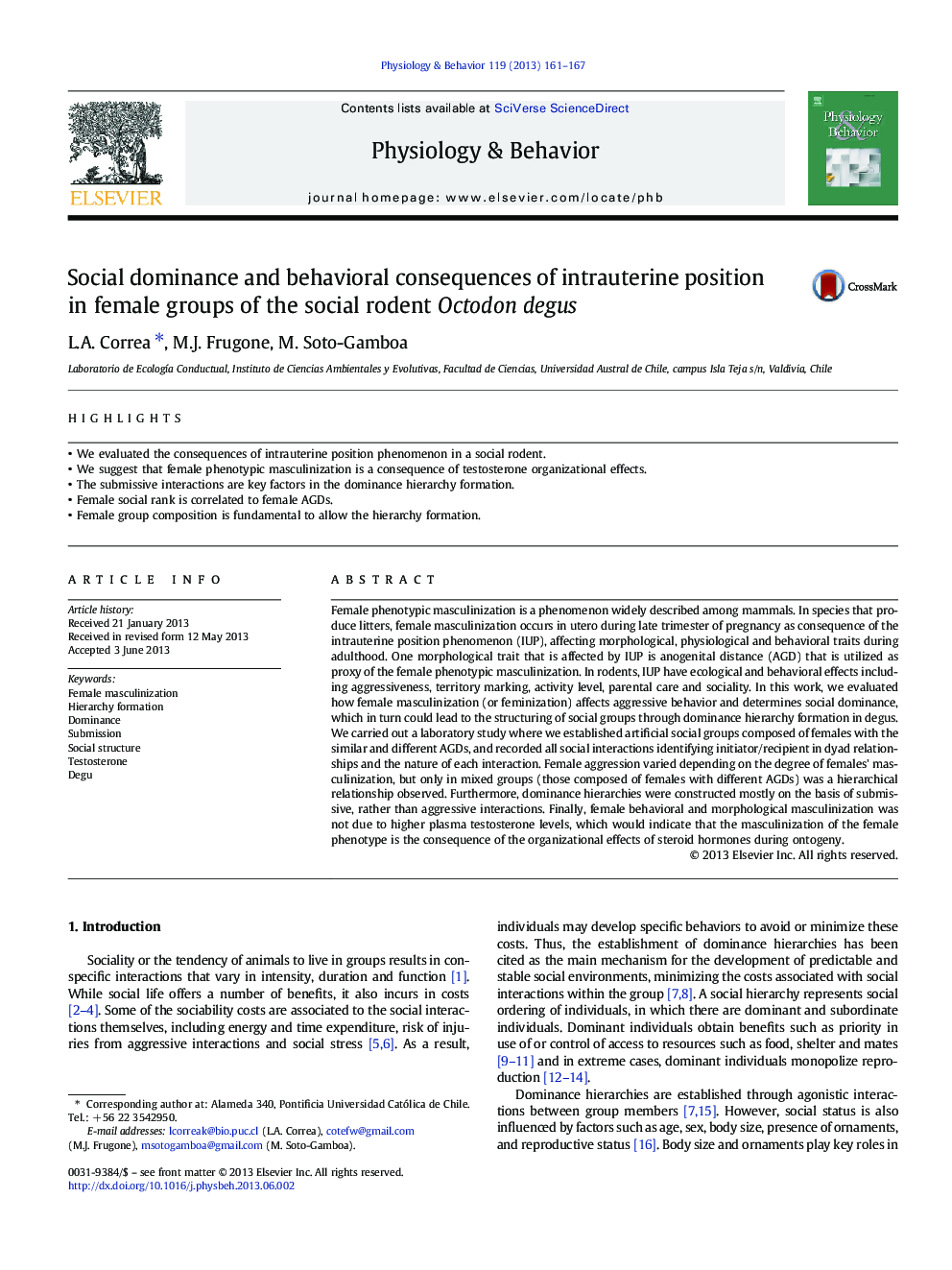| Article ID | Journal | Published Year | Pages | File Type |
|---|---|---|---|---|
| 5924808 | Physiology & Behavior | 2013 | 7 Pages |
Abstract
Female phenotypic masculinization is a phenomenon widely described among mammals. In species that produce litters, female masculinization occurs in utero during late trimester of pregnancy as consequence of the intrauterine position phenomenon (IUP), affecting morphological, physiological and behavioral traits during adulthood. One morphological trait that is affected by IUP is anogenital distance (AGD) that is utilized as proxy of the female phenotypic masculinization. In rodents, IUP have ecological and behavioral effects including aggressiveness, territory marking, activity level, parental care and sociality. In this work, we evaluated how female masculinization (or feminization) affects aggressive behavior and determines social dominance, which in turn could lead to the structuring of social groups through dominance hierarchy formation in degus. We carried out a laboratory study where we established artificial social groups composed of females with the similar and different AGDs, and recorded all social interactions identifying initiator/recipient in dyad relationships and the nature of each interaction. Female aggression varied depending on the degree of females' masculinization, but only in mixed groups (those composed of females with different AGDs) was a hierarchical relationship observed. Furthermore, dominance hierarchies were constructed mostly on the basis of submissive, rather than aggressive interactions. Finally, female behavioral and morphological masculinization was not due to higher plasma testosterone levels, which would indicate that the masculinization of the female phenotype is the consequence of the organizational effects of steroid hormones during ontogeny.
Related Topics
Life Sciences
Biochemistry, Genetics and Molecular Biology
Physiology
Authors
L.A. Correa, M.J. Frugone, M. Soto-Gamboa,
